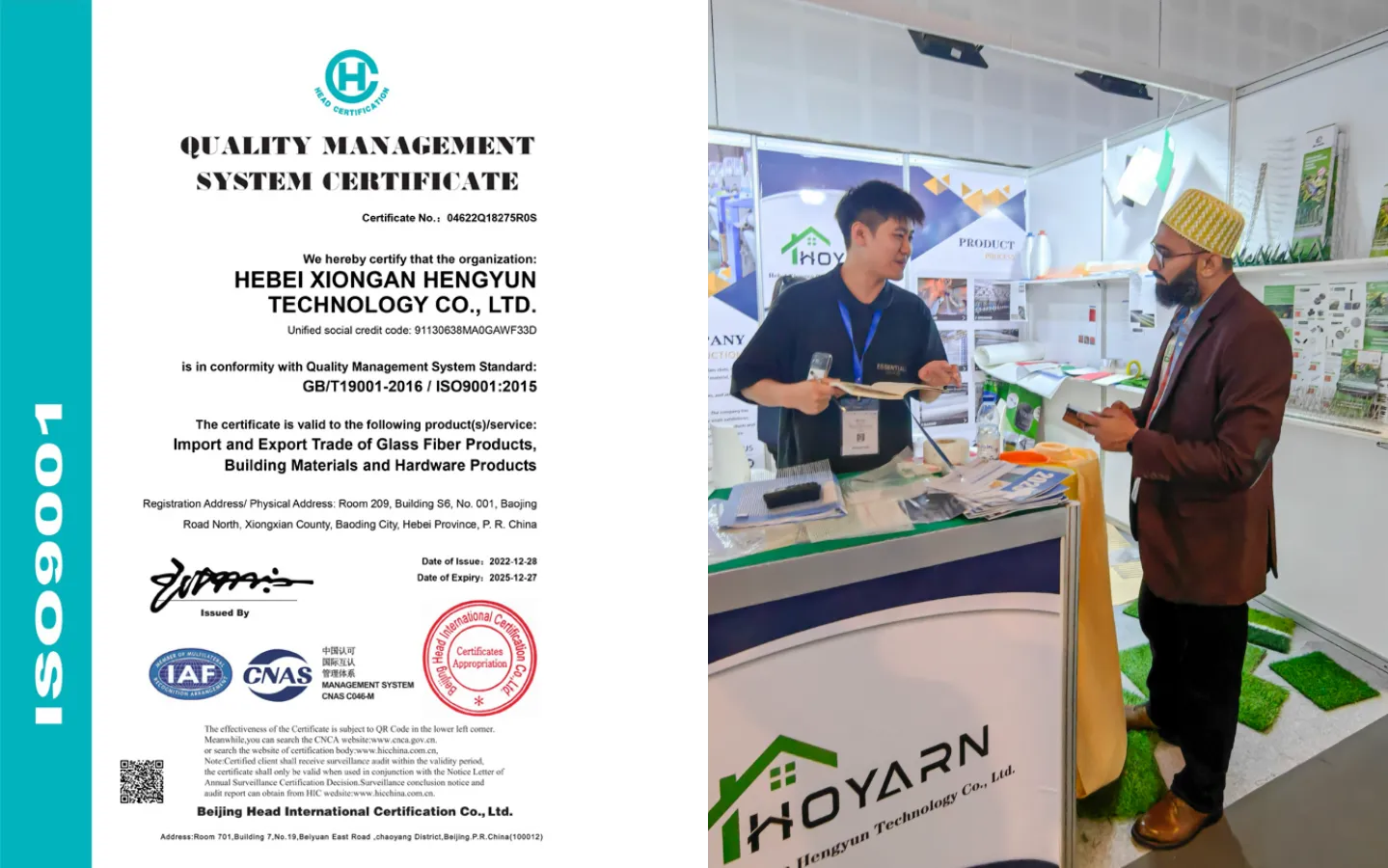
- Afrikaans
- Arabic
- Belarusian
- Bengali
- Czech
- Danish
- Dutch
- English
- Esperanto
- Estonian
- Finnish
- French
- German
- Greek
- Hindi
- Hungarian
- Icelandic
- Indonesian
- irish
- Italian
- Japanese
- kazakh
- Rwandese
- Korean
- Kyrgyz
- Lao
- Latin
- Latvian
- Malay
- Mongolian
- Myanmar
- Norwegian
- Persian
- Polish
- Portuguese
- Romanian
- Russian
- Serbian
- Spanish
- Swedish
- Tagalog
- Tajik
- Thai
- Turkish
- Turkmen
- Ukrainian
- Urdu
- Uighur
- Uzbek
- Vietnamese
Indoor Synthetic Grass for Sports and Recreation Activities
Oct . 17, 2024 02:32 Back to list
The Rise of Indoor Artificial Turf Transforming Spaces and Experiences
As urbanization expands and indoor activities increase, the demand for aesthetically pleasing, versatile, and functional spaces has surged. One of the most innovative solutions that have emerged in this context is indoor artificial turf. This synthetic grass, traditionally associated with outdoor sports fields, has found a unique place indoors, transforming various environments from sports facilities to corporate offices. In this article, we explore the benefits, applications, and future of indoor artificial turf.
Versatility and Aesthetic Appeal
Indoor artificial turf offers a plethora of design possibilities. Available in a wide range of colors, textures, and pile heights, it allows architects and interior designers to create visually stunning spaces tailored to specific needs. Whether it’s a vibrant green for a play area, a subtle tone for an indoor garden, or a sleek, modern look for a corporate setting, artificial turf can enhance any environment.
Moreover, the versatility of indoor turf goes beyond aesthetics. It is a durable and practical solution that requires minimal maintenance compared to natural grass. This is particularly appealing for spaces that may have high foot traffic or limited sunlight. While maintaining natural grass can be labor-intensive and costly, artificial turf provides a lush appearance with far less upkeep.
Health Benefits and Safety Features
The use of indoor artificial turf extends beyond aesthetics; it also promotes health and safety. Many installations use non-toxic materials and are free from harmful chemicals found in some traditional flooring options. This makes artificial turf an ideal choice for facilities such as daycare centers, gyms, and even homes with children and pets.
Additionally, artificial turf is designed with shock-absorption technology that reduces the risk of injuries. This feature is especially beneficial in sports facilities where players are prone to falls and impacts. Indoor turf provides a safer playing surface, ensuring that athletes can train and compete in an environment that minimizes injury risk.
Multi-Functional Spaces
One of the most compelling aspects of indoor artificial turf is its ability to create multi-functional spaces
. Gyms and fitness centers can utilize it for various activities, from yoga to strength training and even team sports. Its flexibility allows for quick adaptations, making it suitable for both individual workouts and group classes.indoor artificial turf

Moreover, indoor turf can be used creatively in corporate settings. Companies are increasingly recognizing the importance of wellness and creativity in the workplace. By incorporating artificial turf into office designs, businesses can create rejuvenating breakout areas, encourage informal meetings, or provide a lively atmosphere that promotes collaboration and innovation.
Sustainability and Environmental Considerations
In an era where sustainability is paramount, many manufacturers of indoor artificial turf are focusing on eco-friendly practices. Production processes have become more mindful of environmental impact, utilizing recycled materials and advanced technologies that reduce waste. Furthermore, unlike natural grass, artificial turf does not require water for irrigation, significantly conserving this vital resource in regions facing water scarcity.
While there are concerns regarding plastic use in synthetic materials, many companies are developing biodegradable options or programs for recycling old turf, contributing to a circular economy.
Future Prospects
The future of indoor artificial turf looks promising. As technology continues to advance, we can expect even more innovations in texture, durability, and sustainability. The growing awareness of the benefits associated with indoor turf is likely to lead to wider adoption across various sectors.
Sports teams are continuously seeking ways to enhance training facilities, and indoor artificial turf offers a practical solution that can withstand the rigors of intensive use. Additionally, as urban spaces become more congested, the need for versatile indoor recreational areas will foster demand for artificial grass solutions.
Conclusion
Indoor artificial turf is not just a trend; it is a transformative solution that is changing how we think about and utilize space. With its versatility, safety, aesthetic appeal, and sustainability, it is becoming an integral part of modern architecture and design. As we continue to navigate the demands of contemporary living, the integration of indoor artificial turf will undoubtedly play a pivotal role in shaping inviting, functional, and sustainable environments for the future. Whether for sports, work, or relaxation, indoor artificial turf is redefining experiences and possibilities in indoor spaces.
-
The Benefits of Artificial Turf for Indoors
NewsJul.15,2025
-
How Artificial Grass Suppliers Ensure Quality Products
NewsJul.15,2025
-
Artificial Grass and Pets: A Space for Relaxation
NewsJul.08,2025
-
Balcony & Outdoor Decoration with Artificial Grass
NewsJul.08,2025
-
Best Indoor Artificial Grass for Home
NewsJul.07,2025
-
Best Pet Turf for Dogs: Safe & Durable Artificial Grass Options
NewsJul.07,2025
Products categories









